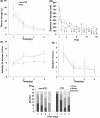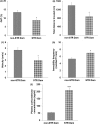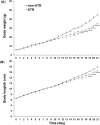Maternal separation blunted spatial memory formation independent of peripheral and hippocampal insulin content in young adult male rats
- PMID: 30332425
- PMCID: PMC6192583
- DOI: 10.1371/journal.pone.0204731
Maternal separation blunted spatial memory formation independent of peripheral and hippocampal insulin content in young adult male rats
Erratum in
-
Correction: Maternal separation blunted spatial memory formation independent of peripheral and hippocampal insulin content in young adult male rats.PLoS One. 2019 Jan 10;14(1):e0210893. doi: 10.1371/journal.pone.0210893. eCollection 2019. PLoS One. 2019. PMID: 30629701 Free PMC article.
Abstract
This study explores the effects of maternal separation as a chronic early life stress (ELS) on pancreatic islets insulin content and secretion, and their potential relationship with the hippocampus insulin content and spatial memory in young adulthood. Male rat offspring were divided into two groups: stress (STR) and non-stress (non-STR) groups. The animals of the STR group were separated from their mothers during postnatal days (PND) 1 to 21. During the weaning time, that is, PND-0 to PND-21, the body weight and length of the pups were measured. Blood samples were collected on PND-1, 21, 29 and 34 and during young adulthood (53±2 days) to determine plasma corticosterone and insulin levels. The young adult animals were also tested for spatial memory. One day after the memory test, the animals were decapitated and their pancreases were removed to measure the islets insulin content and secretion. Finally, the animals' hippocampi were isolated to determine their insulin content and insulin receptor protein amounts. During the period of weaning, the body weight and length of pups belonging to the STR group were significantly lower as compared to those in the non-STR group. Maternal separation did not change the plasma levels of insulin but increased plasma corticosterone levels from PND-21 to young adulthood and also reduced the islets insulin content but did not affect insulin secretion and the hippocampus insulin content and insulin receptor protein amount. Although, at the end of the memory tests, rats of the STR group reached the escape box at almost the same time and distance and with the same errors as rats of the non-STR group, the distance traveled to reach the escape box showed a steep reduction in the non-STR group as compared to the STR group after the first trial. Moreover, as compared to the STR group, the non-STR group showed an increasing trend for direct strategy to find the escape box. The islets insulin content and secretion, and the plasma insulin concentration were not significantly correlated with the hippocampus insulin content. From the results of the present study, it appears that the main behavioral effect of the maternal separation stress in the spatial memory task was to impair the strategy used by the animals to reach the escape box. This may indicate that maternal separation stress affects brain regions other than the hippocampus. Moreover, due to the reduction of the body weight and length of offspring belonging to the STR group, it should be further considered that both maternal separation and early life malnutrition are directly (and mechanistically) linked to cognitive alterations later in life in ways that are not dependent on peripheral and hippocampal insulin content.
Conflict of interest statement
The authors have declared that no competing interests exist.
Figures






References
Publication types
MeSH terms
Substances
LinkOut - more resources
Full Text Sources
Medical

